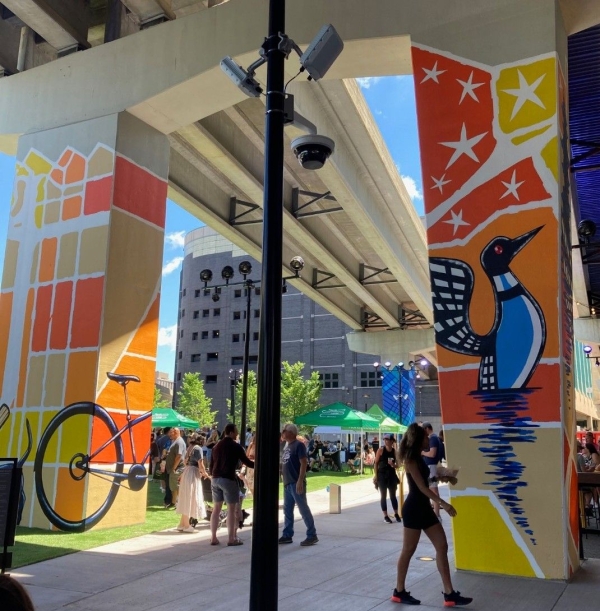
Public Art and Public Space Innovation in MnDOT's Right-of-Way (ROW)
Discover the intersection of art, infrastructure, and community at our exclusive event! Join us for an enlightening afternoon focused on learning from the recent collaboration between the Minnesota Department of Transportation (MnDOT), Hines, and local property developers at North Loop Green. The Utilizing Arts and Culture to Mitigate the Negative Impacts of Transportation Infrastructure on Communities study by MnDOT and partners has been released!
Come for the event stay for the onsite (possibly transportation themed) trivia.
Image courtesy of MnDOT, Mural by Adam Turman
A new public space has been unveiled in MnDOT’s right of way in downtown Minneapolis. Dubbed the North Loop Green, this project revitalizes the area beneath I-94 ramps near the C Ramp and Twins Field. It's the result of a public-private partnership, with MnDOT’s Offices of Land Management, Sustainability and Public Health, and Chief Counsel working with Hines Corporation over three years to launch this first-of-its-kind public space pilot incorporating commercial elements. Hines has committed $5 million to public space enhancements and will oversee the site's operations and maintenance under a 30-year airspace lease. Situated in MnDOT's right of way, the space is nestled between two mixed-use towers near Target Field. The plaza is set to host a variety of year-round events, including outdoor movie nights, ice skating, live performances, and seasonal festivals, aimed at both residents and tourists. Features will include a dog park, seating areas, and food and beverage outlets. The North Loop Green aims to address the scarcity of green spaces in downtown Minneapolis. This initiative is part of a national trend to repurpose underused transportation infrastructures into vibrant public spaces. MnDOT is exploring more such requests, seeking ways to use external resources and maintenance capabilities to further community objectives. To facilitate this project, MnDOT expanded its policies, introducing new guidelines for commercial use in leases within the Right of Way manual. Recognizing that historically marginalized communities have often been adversely affected by transportation infrastructure, future projects will seek to engage these communities more inclusively.